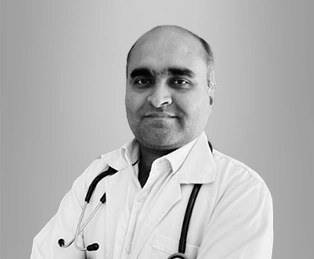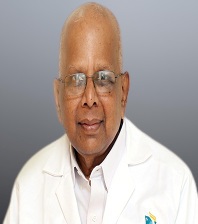Bile Duct Cancer Symptoms - First and End Stage 4 Signs

Quick Summary
Bile Duct Cancer Symptoms
Bile duct cancer is a rare type of cancer that starts in the bile ducts. The bile ducts are small tubes that carry bile from the liver to the intestines.
The symptoms of bile duct cancer can vary depending on the stage of the cancer. In the early stages, there may be no symptoms. As the cancer progresses, symptoms may include:
- Pain in the upper right abdomen
- Jaundice (yellowing of the skin and eyes)
- Dark urine
- Light-colored stools
- Fatigue
- Loss of appetite
- Weight loss
If you have any of these symptoms, see your doctor right away. Early diagnosis and treatment is important for improving your chances of survival.
Bile Duct Cancer, also known as Cholangiocarcinoma, is a rare disease that refers to the uncontrolled proliferation of cells in the bile duct. It is an aggressive type of cancer and requires appropriate medical care and treatment.
The bile duct is the connection between the liver and the small intestine. It is in the form of a thin tube, and its main job is to transfer the bile juices (required for digesting fats) from the liver and gallbladder to the small intestine. Blockage in this duct could initiate a series of problems in the body which becomes apparent in the form of some indications or symptoms.
In this blog, you will find everything you need to know about the symptoms of bile duct cancer end-stage as well as the initial stage.
Causes of Bile Duct Cancer
Just like any other cancer, bile duct cancer also begins with the mutation or structural change in the DNA segment of the cells. This genetic alteration leads to the uncontrolled growth and division of cells. Later, these altered cells contribute to tumour formation.
The precise cause or the set of causes responsible for initiating bile duct cancer are unknown, however, there are existing factors that increase the risk. Keep reading to know them.Risk factors of Bile Duct Cancer
Cholangiocarcinoma or bile duct cancer leads to the destruction of healthy cells along with increase in the number of abnormal cancerous cells. Here are some of the risk factors that increase one's chances of having this cancer:
- Other underlying problems associated with the liver or bile duct include chronic liver disease or cholangitis.
- Parasites residing in the liver, such as liver fluke, can be caused due to eating raw meat.
- People with diabetes or other inherited disorders such as cystic fibrosis.
- Unhealthy adults above the age of 50 years with toxic habits or environments such as smoking or chemical-loaded surroundings.
- Accumulation of stones in the bile duct (Bile duct stones)
- Reflux, i.e. digestive juices streaming back towards the bile duct from the pancreas
What are the Symptoms of Bile Duct Cancer?
In bile duct cancer, the bile flow from the liver is restricted, resulting in unfavourable body changes. Each person's body reacts differently; hence, the symptoms are primarily unclear at the initial stage. Given below are some of the bile duct cancer symptoms of starting and last stages:
High temperature accompanying other complications
- The early or the most initial stage of bile duct cancer exhibits symptoms in the form of abnormal liver function.
- This is because the tumour in the bile duct prevents the flow of bile and bilirubin from the liver. As a side effect of the build-up of bilirubin, the body depicts a high temperature of fever.
- Also, the blockage in the bile duct leads to constraints such as nausea or fatigue, chills, loss of appetite, night sweats, unexplained weight loss, and so on.
Itching
- Itching all over the skin is one of the bile duct cancer symptoms.
- With the increasing size of the tumour, the blockage in the bile duct increases which interrupts the flow of bile and bilirubin (a greenish-yellow substance contained in bile).
- The excess accumulation of bilirubin has a higher likelihood of reaching the bloodstream.
- This results in high levels of bilirubin in the blood. When the bilirubin in the blood goes extremely high, it also tends to enter the skin cells, which initiates skin problems such as itching.
Abdominal Pain
- Consistent and high-intensity abdominal pain is a common stage 4 bile duct cancer symptom.
- An enlarged abdomen or a constant feeling of bloating is usually experienced due to the increased size of the tumour that applies pressure on other organs. In most cases, the pain is experienced just below the ribcage, on the right side of the abdomen.
- Also, the pain can even penetrate in the back when cancer takes a progressive turn.
Jaundice Symptoms
- When it comes to stating the symptoms of bile duct cancer end stage, Jaundice is the most apparent and common one.
- Jaundice can be characterised by the yellowing of skin and eyes turning whitish. This is because of the body's inability to get rid of bile. The disturbed liver function leads to the circulation of bilirubin in the blood.
- The bilirubin from the bloodstream begins to aggregate in the subcutaneous layers, making the skin appear yellow, and the eyes turn white. Jaundice is a sign of bile cancer taking a severe turn; however, it can even appear at the initial stage of cancer which again depends on the size and location of the tumour.
Abnormal Stool Colour
- Bile duct cancer's last stage symptoms include abnormal stool colour and appearance.
- The obstruction of bile and pancreatic juices from reaching the intestine results in the abnormal colour of the stool. The brown colour of the stool is due to the presence of bile salts. The absence or less release of bile salt makes it appear pale or white.
- Also, the progressive stage of cancer curbs the body's ability to digest fat-rich food. The undigested material could appear in the stool as light colour, greasy or clayey.
Changed Urine Colour
- Dark-coloured urine is the symptom of bile duct cancer end stage. The blockage in the bile duct and the buildup of bilirubin in the blood are possible reasons for the urine to yellow in colour.
Possible Treatment
High temperature, signs of inflammation, and unexplained weight loss should not be ignored as these less significant symptoms could be the onset of an unimaginable big crisis. One must not wait for bile duct cancer's last stage symptoms but attempt to seek treatment on time. If one gets diagnosed at the right time, the chances of survival increase with a few proven beneficial therapies. Have a look at them:
- Performing surgical procedures to remove the organ completely or partially depending upon the size and nature of the tumour. Also, if the tumour has spread to the other parts of the body (metastasis), it becomes vital to operate and treat that part. Further, in some cases, doctors might decide to get rid of the blockage rather than complete removal of the organ. In such cases, bypass surgery is conducted on the block.
- The cancerous cells can be dealt with through chemotherapy. This employs medicines that have the potential to kill cancerous cells. It works at shrinking the size of the tumour and improving the symptoms. Chemotherapy can be adopted before or after the surgery, injecting the medicine in the vein or giving oral shots.
- Radiotherapy or radiation treatment makes use of high-energy radioactive rays that work at killing cancerous cells. Radiation is usually not the first choice but can be employed after chemotherapy or surgery to prevent the return of cancer.
Conclusion
Bile duct cancer is one of the rare forms of cancer, and in most cases, the condition is found to be malignant. The prognosis depends on the stage at which the cancer is being diagnosed. The survival rate for undiagnosed or late-diagnosed patients with bile duct cancer symptoms is considerably low.
However, there have also been incidences with positive outcomes when the sufferer availed adequate diagnosis and treatment from the medical specialist. If an individual notices unusual clues, it's vital to consult a knowledgeable and experienced medical practitioner. HexaHealth is a trustworthy source to rely on when one notices odd changes in the body. The qualified team of health wizards is skilled enough to offer the best medical advice and therapy to the patients. Also, they offer no-cost EMI treatment services.
Frequently Asked Questions
What are the symptoms of bile duct cancer?
The most common bile duct cancer symptoms are jaundice, abnormal urine and stool, abdominal pain, itching, weight loss, loss of appetite, fever, vomiting, chills, nausea, and weakness.
Where does bile duct cancer start?
Bile duct cancer starts with abnormal cells accumulating in the inner lining of the perihilar bile duct.
Is there pain with bile duct cancer?
In the initial stages, bile duct cancer does not exhibit any pain; however, when it starts to progress, the pain is felt at the right side of the abdomen.
What are the symptoms of stage 4 bile duct cancer?
Stage 4 bile duct cancer symptoms typically consist of white or pale stools, dark-coloured urine, jaundice, and abdominal pain.
How aggressive is bile duct cancer?
Bile duct cancer is one of the rare forms of cancer whose aggressiveness is as severe as making the sufferer survive for up to 2 years at its end stage.
Can a liver transplant cure bile duct cancer?
It depends on the stage of cancer at which it's been diagnosed. Also, it depends on the area comprising cancer cells. In the case of intrahepatic bile duct cancer, the cancerous part of the liver is required to be removed, referred to as partial hepatectomy.
Is stage 4 bile duct cancer curable?
The likelihood of a cure at the 4th stage is low; however, it again depends on the person's will and treatment-responding ability to combat cancer.
How long can you live with stage 4 bile duct cancer?
One demonstrating stage 4 bile duct cancer symptoms have a chance to survive up to almost five years.
Where does bile duct cancer spread first?
Last Updated on: 17 July 2023
Reviewer

Dr. Aman Priya Khanna
MBBS, DNB General Surgery, Fellowship in Minimal Access Surgery, FIAGES
14 Years Experience
Dr Aman Priya Khanna is a well-known General Surgeon, Proctologist and Bariatric Surgeon currently associated with HealthFort Clinic, Health First Multispecialty Clinic in Delhi. He has 14 years of experience in General Surgery, Proctolo...View More
Author

She has extensive experience in content and regulatory writing with reputed organisations like Sun Pharmaceuticals and Innodata. Skilled in SEO and passionate about creating informative and engaging medical conten...View More
Expert Doctors (10)
NABH Accredited Hospitals (3)
Latest Health Articles
Related Treatments

















